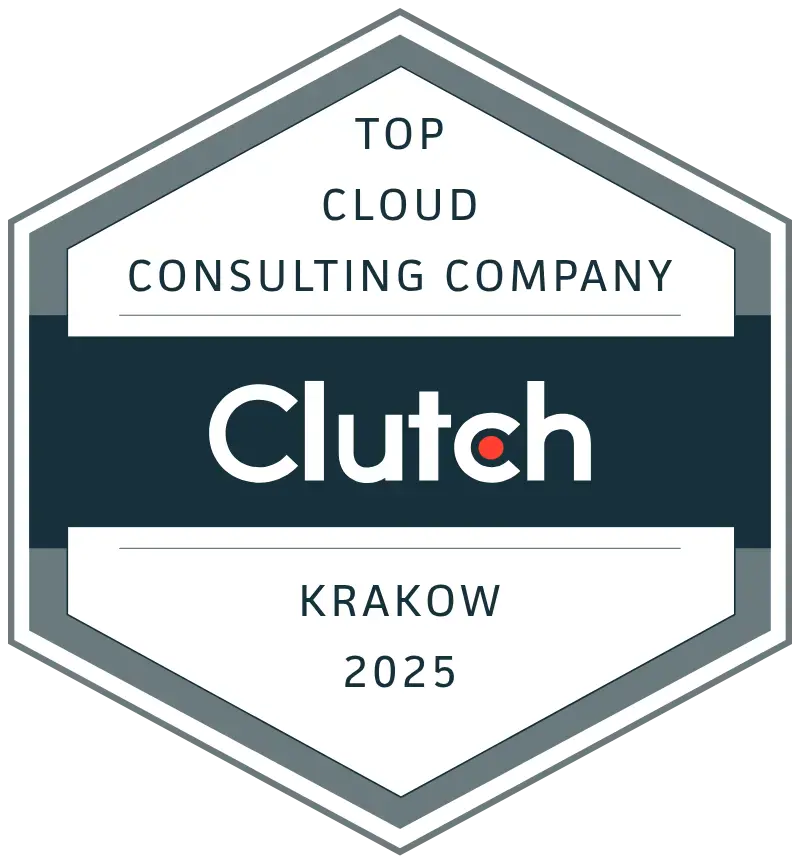Private Blockchain: Complete Guide to Permissioned Networks
Tue, Aug 19, 2025 •14 min read
Category: Blockchain
While public blockchains capture headlines with cryptocurrency volatility and decentralized finance innovations, a quieter revolution is happening in enterprise boardrooms worldwide. Private blockchains are transforming how organizations manage data, streamline operations, and collaborate with trusted partners while maintaining the security and control that regulatory bodies demand. Unlike their public counterparts that anyone can access, a private blockchain operates as a closed network where only authorized users can participate, validate transactions, and access sensitive data. This type of blockchain offers organizations the revolutionary benefits of blockchain technology without sacrificing the privacy and control that enterprise operations require.
In this comprehensive guide, we’ll explore everything you need to know about private blockchains, from their technical mechanisms to real-world applications that are delivering measurable business value. Whether you’re evaluating blockchain solutions for your organization or seeking to understand how permissioned networks differ from public alternatives, this guide provides the insights you need to make informed decisions.
What Is a Private Blockchain?
A private blockchain is a permissioned blockchain network where access, participation, and data visibility are restricted to specific users who have been granted permission by a central authority or network operator. Unlike public blockchains that welcome anyone to join and participate, private blockchain networks require participants to undergo verification processes and receive explicit authorization before they can access the network.
The fundamental characteristics that define a private blockchain include:
Controlled Access and User Verification
Only authorized users can join the network, validate transactions, and access blockchain data. Each participant’s identity is verified and authenticated through digital certificates or cryptographic keys managed by the network’s governing authority. This controlled environment ensures that all network participants are known entities, creating a trusted ecosystem for sensitive business operations.
Single Organization Ownership
Typically, a single entity or organization owns and operates the private blockchain network. This central authority establishes network rules, manages user permissions, and oversees the consensus mechanism. While this reduces decentralization compared to public blockchains, it provides organizations with the governance control they need for compliance and risk management.
Smart Contracts for Authentication
Private blockchains leverage smart contracts to automate participant authentication and transaction validation processes. These programmable contracts ensure that only verified participants can initiate transactions and that all network activities comply with predefined business rules and regulatory requirements.
Enhanced Privacy and Data Control
Unlike public blockchains, where transaction data is visible to all participants, private networks allow organizations to maintain confidentiality over sensitive information while still benefiting from blockchain’s immutability and transparency features among authorized participants.
Popular private blockchain platforms include Hyperledger Fabric, which provides a modular architecture for enterprise applications; R3 Corda, designed specifically for financial institutions; and JPMorgan’s Quorum (acquired by ConsenSys), an enterprise-focused Ethereum variant that supports private transactions and contract privacy.

How Private Blockchains Work
Private blockchains operate through sophisticated permission-based access control mechanisms that ensure only verified participants can interact with the blockchain network. Understanding these technical foundations is crucial for organizations considering blockchain implementation.
Permission-Based Access Control
The network operator establishes comprehensive user verification processes that authenticate participant identities before granting network access. This typically involves digital certificates issued by a Certificate Authority (CA) or cryptographic key management systems that validate user credentials. Each authorized user receives specific permissions that define their role within the network - whether they can validate transactions, access certain data types, or participate in consensus decisions.
Consensus Algorithms for Trusted Networks
Private blockchain networks utilize consensus mechanisms optimized for environments with known, trusted participants. The most common algorithms include:
- Practical Byzantine Fault Tolerance (pBFT): Enables consensus even when some network nodes are faulty or malicious, making it ideal for financial institutions and critical business applications
- RAFT: A leader-based algorithm that provides fast agreement among trusted participants with simple implementation requirements
- Proof of Authority (PoA): Relies on pre-approved validator nodes to confirm transactions, significantly reducing computational overhead while maintaining security
Node Management and Validator Selection
Network administrators carefully select and manage the limited number of nodes that participate in transaction validation. This controlled approach allows for faster transaction processing since the network doesn’t need to coordinate among thousands of unknown participants. Administrators can add or remove validators based on business requirements, ensuring the network scales efficiently with organizational needs.
Transaction Validation Process
When authorized users initiate transactions, the limited number of trusted nodes quickly validate these transactions using the predetermined consensus mechanism. This streamlined process enables transaction processing speeds of 1000+ transactions per second (TPS), far exceeding the 7-15 TPS typical of public blockchain networks like Bitcoin and Ethereum.
Data Governance and Editing Capabilities
Network operators maintain significant control over data governance, including the ability to modify or delete entries when necessary for compliance or error correction. While this contradicts the traditional blockchain principle of immutability, it provides organizations with the flexibility needed for regulatory compliance and business operations.
Private vs Public vs Consortium Blockchains
Understanding the distinctions between blockchain network types is essential for selecting the right solution for your organization’s needs. Each type offers different trade-offs between control, security, and decentralization.
Feature
Private Blockchain
Public Blockchain
Consortium Blockchain
Access Control
Restricted to authorized participants
Open to anyone worldwide
Limited to consortium members
Transaction Speed
1000+ TPS
7-15 TPS (Bitcoin/Ethereum)
100-1000 TPS
Privacy Level
High - confidential data protection
Low - all transactions visible
Medium - selective transparency
Governance
Single organization control
Decentralized community
Multiple organizations jointly
Energy Consumption
Low - efficient consensus
High - proof-of-work mining
Medium - optimized algorithms
Regulatory Compliance
High - customizable for regulations
Challenging - limited control
Medium - consortium agreements
Access Control Differences
Public blockchains promote open participation where any user can join the network, create transactions, and participate in consensus without permission. This openness enables innovation and global accessibility but creates challenges for organizations needing to protect sensitive data or comply with strict regulatory requirements. Private blockchain networks maintain strict access controls, ensuring only authorized users can participate in network activities. This controlled environment enables organizations to maintain data confidentiality while leveraging blockchain’s benefits for secure collaboration with trusted partners.
Transaction Speed and Performance
The performance differences between blockchain types reflect their architectural priorities. Public blockchains prioritize decentralization and security over speed, resulting in slower transaction processing as the network coordinates among thousands of global participants. Private networks optimize for performance among trusted participants, enabling near-instantaneous transaction confirmation for enterprise applications.
Privacy and Transparency Trade-offs
While public blockchains offer complete transparency where all transactions are visible to network participants, private blockchains provide selective transparency that maintains confidentiality for sensitive business information while ensuring accountability among authorized participants. This balance is crucial for industries handling confidential data like healthcare, finance, and supply chain operations.
Hybrid and Consortium Models
Consortium Blockchains
A consortium blockchain represents a middle ground between fully private and public networks. Multiple organizations jointly control the network, sharing governance responsibilities while maintaining restricted access to trusted partners. This model works well for industry collaborations where competitors need to share certain data while maintaining competitive advantages.
Hybrid Blockchain Architectures
Hybrid models combine private and public blockchain features, allowing organizations to maintain private operations while leveraging public networks for specific functions like timestamping or external verification. These architectures enable organizations to benefit from both controlled environments and public blockchain security.
Federated Governance Models
Some private blockchain networks adopt federated governance structures where trusted partners collectively manage network rules and operations. This approach distributes control among multiple organizations while maintaining the privacy and performance benefits of permissioned networks.
Advantages of Private Blockchains
Private blockchains offer compelling benefits that address specific enterprise needs, making them attractive solutions for organizations seeking blockchain’s advantages while maintaining operational control and regulatory compliance.
Enhanced Privacy and Data Confidentiality
Organizations can protect sensitive business information while still benefiting from blockchain’s transparency among authorized participants. This privacy control is essential for industries handling confidential data such as patient records, financial transactions, or proprietary business processes. Private networks enable secure sharing of necessary information with trusted partners without exposing sensitive data to unauthorized parties.
Superior Transaction Processing Speed
With a limited number of trusted validators and optimized consensus mechanisms, private blockchain networks achieve significantly faster transaction processing compared to public alternatives. This performance advantage enables real-time business operations and supports high-volume transaction environments that enterprise applications require.
Complete Network Governance Control
Organizations maintain full authority over network rules, participant behavior, and protocol updates. This control enables rapid adaptation to changing business requirements, implementation of specific compliance measures, and customization of network features to support unique organizational needs. Network operators can establish specific governance frameworks that align with corporate policies and regulatory requirements.
Reduced Energy Consumption
Private networks eliminate the energy-intensive mining processes required by public blockchain networks. By using efficient consensus mechanisms like Proof of Authority or Practical Byzantine Fault Tolerance, private blockchains consume minimal energy while maintaining security and reliability. This efficiency aligns with corporate sustainability goals and reduces operational costs.
Regulatory Compliance and Legal Certainty
Private blockchain networks can be designed to comply with specific regulatory requirements, such as GDPR for data protection, HIPAA for healthcare information, or SOX for financial reporting. Organizations can implement features like data encryption, access logging, and audit trails that satisfy regulatory bodies while maintaining blockchain’s benefits for data integrity and transparency.
Customizable Features and Integration
Unlike public blockchains with fixed protocols, private networks can be customized to support specific business requirements. Organizations can integrate blockchain technology with existing enterprise systems, implement custom smart contracts for automated business processes, and modify network features to optimize performance for particular use cases.
Cost Predictability and Control
Private blockchain operations provide predictable costs without the volatility associated with public network transaction fees. Organizations can budget for infrastructure and operational expenses while avoiding unexpected costs from network congestion or cryptocurrency price fluctuations.
Disadvantages and Limitations
While private blockchains offer significant advantages for enterprise applications, they also present important limitations that organizations must carefully consider when evaluating blockchain solutions.
Reduced Security Through Limited Decentralization
Private blockchain networks rely on a limited number of trusted nodes, creating potential security vulnerabilities compared to public networks with thousands of validators. This concentration of validation power means that if a significant portion of validators is compromised, the entire network’s integrity could be at risk. The trusted environment, while efficient, reduces the cryptographic security benefits that come from widespread decentralization.
Vulnerability to Data Manipulation and Insider Attacks
With centralized control and fewer validators, private networks face higher risks of data manipulation by malicious insiders or coordinated attacks on the limited number of validation nodes. Since network participants are known entities, there’s potential for collusion among validators to alter transaction records or manipulate consensus decisions. This vulnerability contradicts blockchain’s fundamental promise of immutable, tamper-resistant data.
High Implementation and Maintenance Costs
Establishing and maintaining a private blockchain network requires significant upfront investment in infrastructure, specialized technical talent, and ongoing operational support. Organizations must develop expertise in blockchain technology, implement robust security measures, and maintain network infrastructure, which can be costly compared to leveraging existing database solutions or public blockchain services.
Limited Transparency and Auditability
The restricted access that provides privacy benefits also limits external auditability and transparency. Regulatory bodies, partners, or stakeholders cannot independently verify network operations, potentially creating compliance challenges in industries requiring third-party auditing. This limitation may reduce trust among external parties who cannot verify the integrity of blockchain operations.
Contradiction of Core Blockchain Principles
Private blockchains fundamentally contradict the decentralized, trustless principles that originally defined blockchain technology. By introducing central authorities and restricting access, these networks essentially create distributed databases with blockchain characteristics rather than true blockchain systems. This philosophical contradiction raises questions about whether private networks provide sufficient advantages over traditional database solutions.
Single Points of Failure and Censorship Risks
Centralized governance creates potential single points of failure where network operators can censor transactions, restrict access, or modify network rules without participant consensus. If the governing organization faces legal challenges, technical failures, or business disruption, the entire network’s operation could be compromised, affecting all participants’ access to critical business data.
Scalability Limitations
While private networks perform better than public blockchains, they still face scalability challenges when expanding to include more participants or handling dramatically increased transaction volumes. Adding new organizations or validators requires careful security review and network reconfiguration, potentially limiting business agility and growth opportunities.
Real-World Use Cases and Applications
Private blockchain implementations across various industries demonstrate the technology’s practical value in solving complex business challenges while delivering measurable results. These real-world applications showcase how organizations leverage permissioned networks to improve efficiency, enhance security, and enable trusted collaboration.
Enterprise Applications and Success Stories
Leading organizations across multiple sectors have successfully deployed private blockchain networks to address specific business challenges. These implementations focus on improving data integrity, streamlining multi-party processes, and enhancing transparency while maintaining privacy and control over sensitive information. The success of these implementations often depends on careful integration with existing business systems and a clear definition of success metrics. Organizations that achieve the best results typically start with specific use cases that address clear pain points rather than attempting comprehensive blockchain transformation across all operations.
Supply Chain Management
Supply chain applications represent some of the most successful private blockchain implementations, providing visibility and traceability while protecting competitive information and maintaining business relationships.
Walmart’s IBM Food Trust Network
Walmart deployed a private blockchain solution using IBM Food Trust to track food deliveries from farm to store, dramatically improving food safety response capabilities. The system reduced the time required to trace contaminated products from weeks to seconds, enabling rapid response to food safety incidents and potentially saving lives through faster recalls. The network connects multiple organizations, including suppliers, distributors, and retailers, while maintaining confidentiality over sensitive commercial information such as pricing and supplier relationships. This selective transparency enables necessary collaboration while protecting competitive advantages.
De Beers Diamond Tracking System
De Beers implemented a private blockchain platform called Tracr to track diamonds from mine to retail, ensuring authenticity and preventing conflict diamonds from entering the supply chain. The system provides immutable records of each diamond’s journey while maintaining privacy over commercial transactions and business relationships.
DHL Pharmaceutical Supply Chain
DHL utilizes private blockchain technology to combat pharmaceutical counterfeiting by creating secure, immutable records of drug manufacturing, distribution, and delivery. The system ensures medication authenticity while protecting sensitive patient information and maintaining compliance with healthcare regulations across multiple jurisdictions.
Honeywell Aerospace Parts Tracking
Honeywell implemented a private blockchain solution to track aerospace components throughout their lifecycle, ensuring compliance with safety regulations and enabling predictive maintenance. The system maintains detailed records of parts manufacturing, installation, and maintenance while protecting sensitive information about aircraft operations and customer data.
Financial Services and Banking
Financial institutions have embraced private blockchain technology to improve settlement times, reduce costs, and enhance regulatory compliance while maintaining the security and control required for monetary transactions.
JPMorgan’s JPM Coin for Institutional Payments
JPMorgan developed JPM Coin, a private blockchain-based digital currency for institutional clients, enabling near-instantaneous settlement of cross-border payments and reducing settlement times from days to minutes. The system processes billions of dollars in transactions daily while maintaining strict privacy and regulatory compliance. The platform demonstrates how private blockchains can deliver significant operational improvements, reducing settlement risk, lowering transaction costs, and improving liquidity management, while meeting stringent financial industry requirements for security and regulatory oversight.
R3 Corda Platform Adoption
Major banks worldwide utilize R3’s Corda platform for trade finance applications, enabling secure sharing of trade documentation and automating compliance processes through smart contracts. The platform has processed thousands of trade finance transactions, reducing processing time from weeks to days while improving accuracy and reducing operational costs.
Healthcare and Identity Management
Healthcare organizations leverage private blockchain networks to securely share patient data while maintaining strict privacy controls and regulatory compliance with healthcare regulations.
Secure Patient Data Sharing
Healthcare providers utilize private blockchain networks to share patient information among authorized healthcare professionals while maintaining patient privacy and ensuring data integrity. These systems enable coordinated care while complying with HIPAA regulations and giving patients control over their own identity data. Patients can grant permission for specific healthcare providers to access relevant medical records, creating a comprehensive view of patient health while maintaining privacy controls and ensuring only authorized users can access sensitive medical information.
RiskStream Consortium Insurance Data Sharing
Over 30 insurance companies collaborate through the RiskStream Consortium’s private blockchain network to share fraud prevention data and streamline claims processing. The system enables secure sharing of necessary information for fraud detection while protecting customer privacy and maintaining competitive advantages.
Government Digital Identity Systems
Several governments have implemented private blockchain solutions for citizen identity verification, creating secure digital identities that citizens control while enabling government agencies to verify identity information efficiently. These systems improve service delivery while protecting citizen privacy and preventing identity fraud.
Electronic Health Records with Patient-Controlled Access
Healthcare organizations implement private blockchain solutions that give patients control over their electronic health records while enabling healthcare providers to access necessary information with patient consent. These systems improve care coordination while maintaining patient privacy and ensuring compliance with healthcare regulations.
Corporate Operations
Organizations across various industries utilize private blockchain technology to streamline internal operations, improve audit transparency, and automate business processes through smart contracts.
General Electric’s Intercompany Accounting
General Electric implemented a private blockchain solution to manage intercompany accounting across multiple business entities, providing real-time visibility into financial transactions while maintaining data security and regulatory compliance. The system automates reconciliation processes and improves financial reporting accuracy.
Real-Time Transaction Processing with Smart Contracts
Manufacturing companies utilize private blockchain networks with smart contracts to automate supplier payments, quality control processes, and inventory management. These systems reduce manual processing time, improve accuracy, and provide audit trails for regulatory compliance.
Enhanced Audit Transparency and Regulatory Compliance
Organizations implement private blockchain solutions to create immutable audit trails for financial reporting, regulatory compliance, and internal controls. These systems improve transparency for regulatory bodies while maintaining security over sensitive business information.
Cost Reduction and Process Automation
Companies across various industries report significant cost reductions and efficiency improvements through private blockchain implementation, including reduced manual processing time, improved data accuracy, and streamlined multi-party business processes. These benefits often justify the initial implementation costs within 12-24 months.
Implementation Considerations
Successfully implementing a private blockchain solution requires careful planning across technical, financial, and organizational dimensions. Organizations must evaluate multiple factors to ensure their blockchain initiative delivers expected benefits while managing risks and costs effectively.
Technical Requirements and Infrastructure Planning
Private blockchain implementation begins with establishing a robust infrastructure capable of supporting distributed ledger operations. Organizations need secure server infrastructure, reliable network connectivity, and comprehensive backup systems to ensure continuous operations. The choice of consensus mechanism significantly impacts performance requirements - Practical Byzantine Fault Tolerance requires more computational resources than Proof of Authority, but provides greater security against malicious actors. Security protocols must be designed from the ground up, including encryption for data at rest and in transit, secure key management systems, and comprehensive access controls. Organizations should implement multi-factor authentication, regular security audits, and incident response procedures to protect against security threats and ensure business continuity.
Cost-Benefit Analysis and Financial Planning
The total cost of ownership for private blockchain implementation includes development costs, infrastructure expenses, ongoing maintenance, and specialized talent acquisition. Organizations typically invest $500,000 to $2 million for initial implementation, depending on complexity and scale requirements. Benefits quantification should focus on measurable improvements such as reduced transaction processing time, lower operational costs, improved compliance efficiency, and enhanced data security. Many organizations achieve positive ROI within 18-24 months through process automation, reduced manual errors, and improved operational efficiency.
Integration Challenges with Legacy Systems
Most organizations must integrate blockchain solutions with existing enterprise systems, databases, and business processes. This integration requires careful API design, data migration planning, and often custom middleware development to bridge blockchain and traditional systems. Organizations should plan for gradual migration rather than complete system replacement, allowing time for user training, process refinement, and system optimization. Successful implementations often start with specific use cases and expand gradually as teams gain experience and confidence with the technology.
Scalability Planning for Growing Requirements
While private blockchain networks typically handle current transaction volumes effectively, organizations must plan for future growth in participants, transaction volumes, and data storage requirements. Scalability planning should consider both technical capacity and governance processes for adding new participants or validators. Network architecture should be designed to accommodate growth through horizontal scaling, where additional nodes can be added to increase capacity, rather than relying solely on vertical scaling that has inherent limitations.
Governance Framework and Network Rules
Establishing clear governance frameworks is crucial for private blockchain success. Organizations must define participant roles and responsibilities, establish procedures for network rule changes, and create processes for resolving disputes or addressing network issues. Governance frameworks should address participant onboarding and removal procedures, data access policies, compliance requirements, and procedures for updating smart contracts or network protocols. Clear governance reduces operational risks and ensures all participants understand their rights and responsibilities.
Security Best Practices and Risk Mitigation
Private blockchain security requires comprehensive planning across multiple dimensions. Organizations should implement defense-in-depth strategies that protect against both external attacks and insider threats. This includes network segmentation, regular security assessments, and continuous monitoring for suspicious activities. Key management is particularly critical, as compromised cryptographic keys can undermine entire network security. Organizations should implement secure key generation, storage, and rotation procedures, along with multi-signature requirements for critical operations.
Change Management and User Adoption
Successful blockchain implementation requires significant attention to change management and user adoption. Teams need training on new processes, tools, and concepts that may be fundamentally different from existing systems. Organizations should invest in comprehensive training programs and provide ongoing support during the transition period. User adoption often determines implementation success more than technical capabilities. Organizations should engage stakeholders early in the planning process, clearly communicate benefits, and provide sufficient support to ensure a smooth transition to new blockchain-based processes.
Future of Private Blockchains
The private blockchain landscape continues evolving as organizations gain experience with implementation challenges and benefits while technology advances to address current limitations. Understanding these trends helps organizations make informed decisions about blockchain investments and strategic planning.
Current market research indicates that only 14% of private blockchain projects reach the production stage, highlighting the significant gap between theoretical benefits and practical implementation success. This low success rate reflects the complexity of blockchain implementation, integration challenges with existing systems, and the need for specialized expertise that many organizations lack. Despite implementation challenges, enterprise blockchain spending continues growing, with organizations increasingly focusing on specific use cases that address clear business problems rather than attempting comprehensive blockchain transformation. Successful implementations typically start with pilot projects that demonstrate value before expanding to larger-scale deployments.
Many organizations are moving away from standalone private blockchain networks toward hybrid models that combine private operations with connections to public blockchain infrastructure. These hybrid approaches enable organizations to maintain control over sensitive operations while leveraging public networks for external verification, timestamping, or interoperability with other organizations. Hybrid models offer advantages, including reduced infrastructure costs, improved security through external validation, and enhanced interoperability with partners who may use different blockchain platforms. This evolution reflects growing understanding that the choice between private and public isn’t binary - organizations can benefit from both approaches for different use cases.
Integration with Emerging Technologies
Private blockchain platforms increasingly integrate with other emerging technologies to create more comprehensive solutions. Artificial intelligence enhances blockchain networks through automated contract execution, predictive analytics for network optimization, and intelligent fraud detection. Internet of Things (IoT) devices generate data that private blockchains can secure and manage while maintaining privacy. Cloud computing integration simplifies blockchain deployment and management, with major cloud providers offering Blockchain-as-a-Service (BaaS) platforms that reduce technical barriers and infrastructure costs. These integrated solutions enable organizations to leverage blockchain benefits without developing extensive in-house expertise.
Regulatory frameworks for blockchain technology continue evolving, with governments worldwide developing specific guidelines for enterprise blockchain implementation. These regulations often favor private blockchain networks because they provide greater control over data governance, participant verification, and compliance monitoring compared to public alternatives. Organizations should monitor regulatory developments in their jurisdictions and industries, as compliance requirements may influence blockchain architecture decisions and implementation approaches. Private blockchain networks’ ability to customize compliance features makes them attractive for organizations in heavily regulated industries.
Interoperability and Standardization Efforts
Industry consortia and standards organizations are developing protocols for blockchain interoperability, enabling private networks to communicate with other blockchain platforms and traditional systems. These efforts aim to prevent vendor lock-in and enable organizations to choose best-of-breed solutions while maintaining integration capabilities. Standardization efforts focus on common protocols for data exchange, identity management, and smart contract execution across different blockchain platforms. Success in these areas could significantly increase private blockchain adoption by reducing implementation risks and improving long-term flexibility.
Some industry experts predict that standalone private blockchain networks may eventually be replaced by more sophisticated solutions that combine blockchain technology with other distributed systems approaches. These next-generation solutions might provide blockchain benefits while addressing current limitations around scalability, interoperability, and complexity. Organizations should consider this potential evolution when making long-term blockchain investments, ensuring their solutions can adapt to changing technology landscapes and integrate with future platforms and standards.
Growing Focus on Blockchain-as-a-Service Platforms
The complexity and cost of developing custom blockchain solutions drive growing interest in Blockchain-as-a-Service platforms that provide pre-built infrastructure and tools for faster deployment. These platforms reduce technical barriers and enable organizations to focus on business logic rather than infrastructure management. BaaS platforms often provide better security, reliability, and scalability than custom solutions while reducing ongoing maintenance costs and technical risks. This trend suggests that many organizations will leverage managed services rather than building comprehensive in-house blockchain capabilities.
Conclusion
Private blockchain technology represents a pragmatic approach to leveraging distributed ledger benefits while maintaining the control and privacy that enterprise operations require. As organizations worldwide implement these permissioned networks, clear patterns emerge regarding when private blockchains deliver value and when alternative solutions might be more appropriate. The most successful private blockchain implementations focus on specific business problems where multiple organizations need to share data securely while maintaining confidentiality over sensitive information. Supply chain tracking, financial settlement, healthcare data sharing, and regulatory compliance represent proven use cases where private blockchain networks provide measurable business value.
However, organizations must carefully weigh the advantages of enhanced privacy, faster transaction processing, and regulatory compliance against the limitations of reduced decentralization, higher implementation costs, and potential security vulnerabilities. The decision to implement private blockchain technology should be based on a thorough analysis of business requirements, technical capabilities, and long-term strategic objectives. As the technology continues evolving toward hybrid models and increased interoperability, organizations should approach private blockchain implementation with clear success metrics, realistic expectations, and flexibility to adapt as standards and best practices mature. The most successful organizations start with focused pilot projects that demonstrate value before expanding to comprehensive blockchain strategies.
Whether private blockchain technology is right for your organization depends on your specific needs for data privacy, transaction speed, regulatory compliance, and control over network governance. By understanding both the capabilities and limitations of private blockchain networks, you can make informed decisions that align with your strategic objectives and deliver meaningful business value. Consider starting your blockchain journey by identifying specific use cases where enhanced data integrity, multi-party collaboration, and regulatory compliance could provide significant business benefits. With careful planning and realistic expectations, private blockchain technology can become a valuable tool for achieving your organization’s digital transformation goals.









